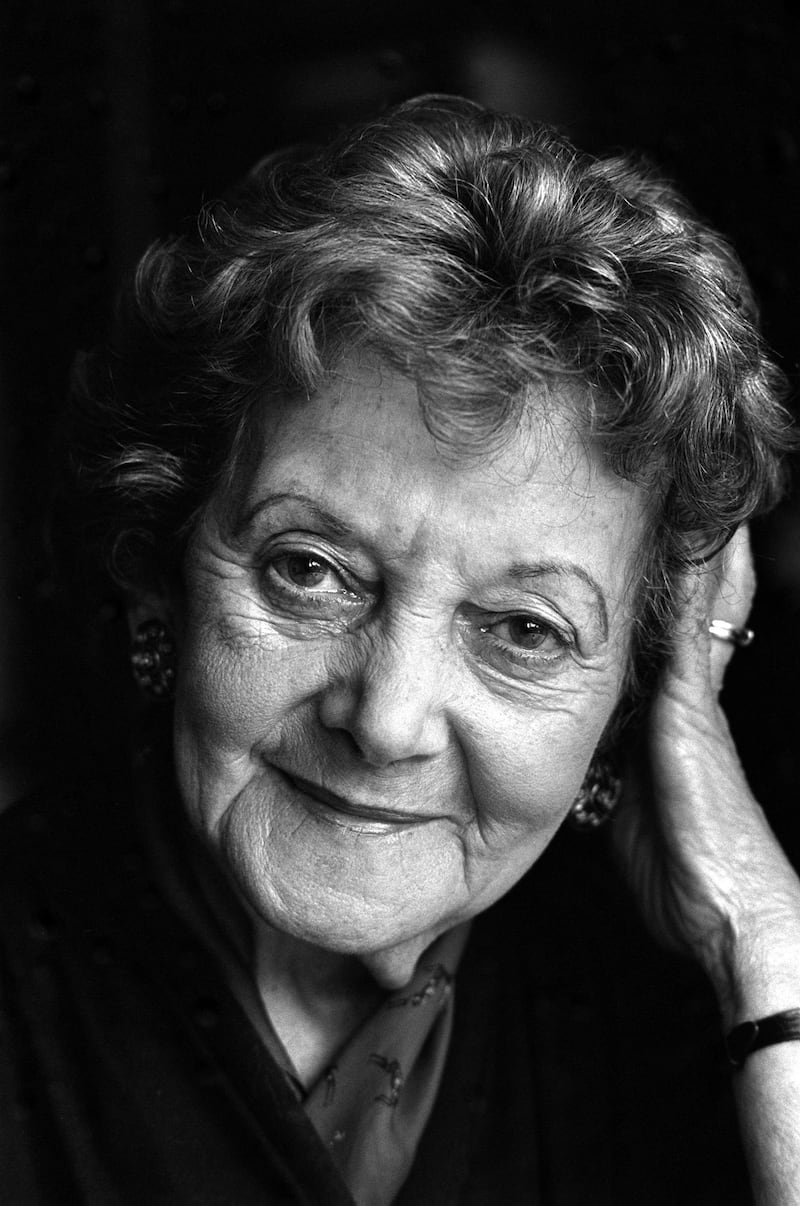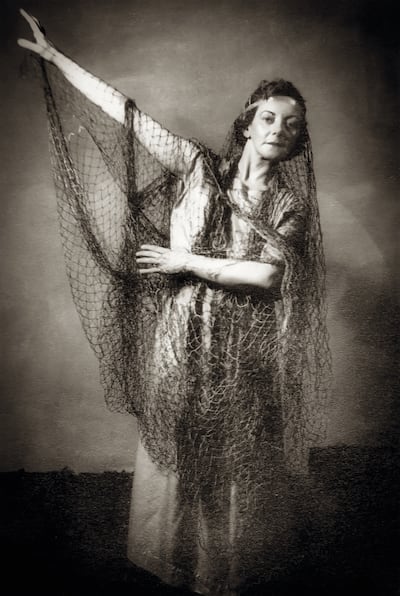During the later years of her long life, dancer Helen Lewis frequently accepted invitations to give public talks and interviews about her wartime experiences. She was routinely introduced as a Holocaust survivor, a label she thoroughly disliked.
It is true that, as a young woman from the German-speaking Sudetenland in the former Czechoslovakia, she had endured unimaginable horrors at the hands of the Nazis. In 1942, along with her husband Paul, she was deported to the Jewish ghetto at Terezin, joining a large number of artistic inmates whose respective talents were exploited by the camp authorities for propaganda purposes.
From Terezin, the couple were taken to Auschwitz, and separated. Weakened and scarred after surgery in Terezin, she had lined up, naked and terrified, in front of Josef Mengele, the “Angel of Death”. Only an impulsive, split-second decision removed her from his scrutiny.
In January 1945, as the Red Army closed in on Auschwitz, she embarked on one of the so-called death marches, from which she escaped by throwing herself into a snow-filled ditch. After liberation she discovered that her husband had perished.
She unflinchingly outlined these events in her internationally acclaimed memoir A Time to Speak, published in 1992. But in her heart, the single thing that defined her, that permeated the very core of her being, was dance.
Dance it was that had offered creative redemption and spiritual nourishment during those dark days. Dance had rescued her from deportation on the lorry that arrived in Auschwitz every week to load up its human cargo for extermination. Never for a single moment did she doubt that dance saved her life.
A Time to Speak has been translated into many languages. Its narrative is the more powerful for its cool, unsentimental, clear-eyed account of her experiences in that living hell. Only in sections where dance enters the writer’s consciousness does a hint of emotion seep in.

When the war ended, life took another unexpected turn. Helen was contacted by a man called Harry Lewis, with whom she had enjoyed a teenage romance. In 1938, he and his parents, who had connections to the linen industry, had fled to Northern Ireland. But he had not forgotten her and spotted her name on a Red Cross survivors list. In 1947, they married, in Prague before settling down in his adopted home city of Belfast.
The tightening of the Nazi noose had abruptly halted Lewis’ studies at Milča Mayerová's prestigious School of Dance in Prague, where she had been one of its rising stars. But dance would resurface in her life. Happily remarried with two young sons, it was in artistically conservative, politically divided Northern Ireland that she would emerge as a major figure in cultural life, choreographing for theatre and opera, making her own work and introducing the expressive techniques and vocabulary of central European modern dance to generations of young dancers.
She gradually, very gradually, told us about what she had gone through, little things, very few details. When I was thinking about a title for this book, I realised that those shadows were always there in her dance.
— Maddy Tongue
Maddy Tongue was one of the pupils at the Belfast Modern Dance Group, formed by Lewis in 1962. A gifted dancer herself, she appeared in many of Lewis’ celebrated works and the two shared a friendship spanning some five decades. Tongue, who now lives in Cambridge, also worked as a movement director on a number of Yeats dramas, alongside the renowned theatre director Sam McCready, another of Lewis’ friends and collaborators. They were all members of an exceptional group of theatre-makers closely involved in the early development of Belfast’s Lyric Theatre.
This beautifully presented book, Helen Lewis: Shadows Behind the Dance, is published by The Irish Pages Press/Cló An Mhíl Bhuí, the winner of the 2022 British Book Awards Small Press of the Year (Island of Ireland). In it Tongue takes up where A Time to Speak leaves off. With insider knowledge, meticulous attention to detail and palpable affection for its subject, it completes the story of an extraordinary woman’s unswerving pursuit of artistic perfection, her profound belief in humanity and the lasting dance legacy she forged, albeit one tinged with suffering and shadow, as suggested in the title. “Helen was unique, a really remarkable person whose influence spread over so many people,” says Tongue.
“It’s important to remember that her life in Northern Ireland was fully about dance. It was not about the Holocaust. She didn’t like being described as a Holocaust survivor and she didn’t talk about it. Yet in her dance there were constant echoes of what she had suffered. Her choreography always concentrated on relationships or loss or being shunned by society.
“She gradually, very gradually, told us about what she had gone through, little things, very few details. When I was thinking about a title for this book, I realised that those shadows were always there in her dance. Even though she was buoyant and bubbly and positive and full of life, they were always present, hovering in the background.”
Tongue admits that, in many ways, through friendship, conversations with Lewis, interviews, collaborations and essays, she has been subconsciously writing this book over the course of many years. She has no hesitation in admitting it to be a labour of love.
“Around the turn of the century, I did an undergraduate degree and wrote essays about dance in Northern Ireland and its place in the plays of Yeats. I showed them to Helen – and she would correct them! She was very strict. Some were about Helen’s own contribution to dance here, which included her work with Corrymeela, the peace and reconciliation organisation, something which was very important to her.
“When she died, all the obituaries mentioned Auschwitz in the headlines, while dance played a very small part in the articles. That really annoyed me and spurred me on to put together a book about that very important aspect of her life.
We were all destined for the gas chambers. There is no logical reason why I survived while so many others did not.
— Helen Lewis
“She changed the face of dance here and made modern dance acceptable as an art form. Before that it was dismissed. There was no audience or training for it. It was Helen who brought it and fought for it, with all the tremendous drive that she possessed. Until she wrote her own book in 1992, she couldn’t find the words to get those feelings out there, but it all went into her choreography and her dance.
“This book is for her. I hope I’ve captured a perspective on the significance of what she did. For Helen, dance was life. Pure and simple. She was compelled to dance, even through the Holocaust days and all the terrible things she experienced”.
Tongue’s portrait is complemented by a folio of five Holocaust poems by Michael Longley, with line drawings by Sarah Longley, another of Lewis’ past pupils. There is also an interview — entitled An Irish Epilogue — which Irish Pages/The Irish Pages Press editor, poet and essayist Chris Agee conducted with Lewis in 2002. The foreword is by Lewis’ sons Michael and Robin.

“Maddy’s book not only deals with a major and exemplary figure in the postwar cultural life of Belfast, but fulfils the two essential and necessary criteria for our eight annual titles of poetry, essays, memoir and non-fiction: exceptional literary content and unsurpassed production values”, says Agee.
“I knew Helen well and I find this story of her struggle for modern dance in the aftermath of ‘the Great Evil’ in Europe (as she put it in my interview with her) deeply moving. It also exemplifies the distinct international dimension of the arts and artists in Belfast over the past 70 years, in contradistinction to the often-stereotypical views (in Britain and the Republic) of the city as simply a ‘troubled backwater’ and ‘stuck in provincial insularity’. That is, in fact, one of the primary longer-term aims of both the Press and the Journal.”
In her foreword to A Time to Speak, the novelist Jennifer Johnston wrote movingly of “ ... a woman who has survived the unsurvivable”. In a conversation between this writer and Lewis for The Irish Times, at the time of the book’s publication, the obvious question was posed: how, indeed, did she manage to survive?
Lewis paused for a long moment before quietly replying:
“When I go back over those events in my mind, I can make little sense of it. We were all destined for the gas chambers. There is no logical reason why I survived while so many others did not. It was not that I was stronger, wiser or better equipped than those around me. It was, perhaps ... that I was a dancer.”
Note: Helen Lewis: Shadows Behind the Dance by Maddy Tongue is published by The Irish Pages Press. It will be launched on January 22nd at The Irish Jewish Museum in Dublin at 3pm and on January 27th (Holocaust Memorial Day) at the Crescent Arts Centre in Belfast at 4.30pm.









